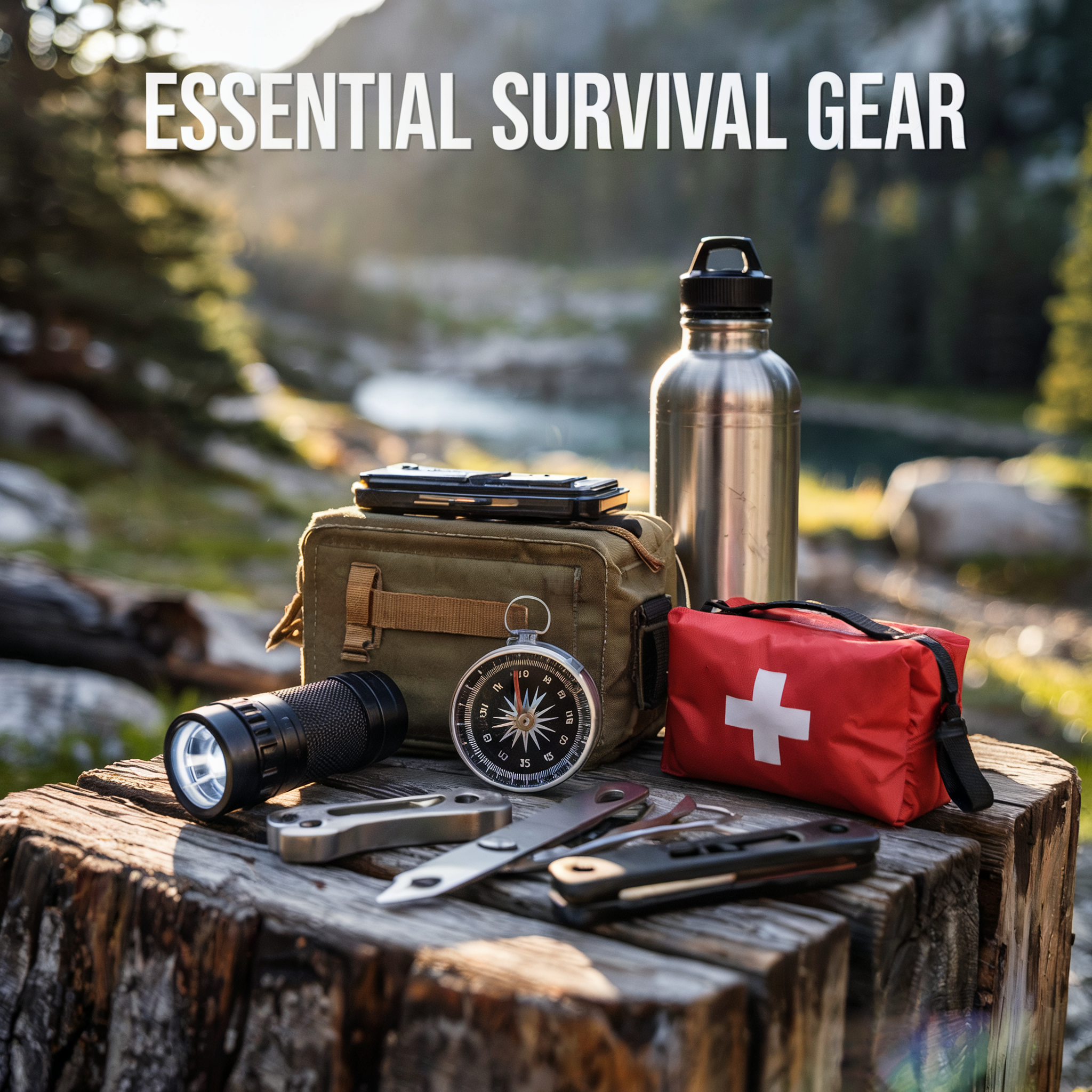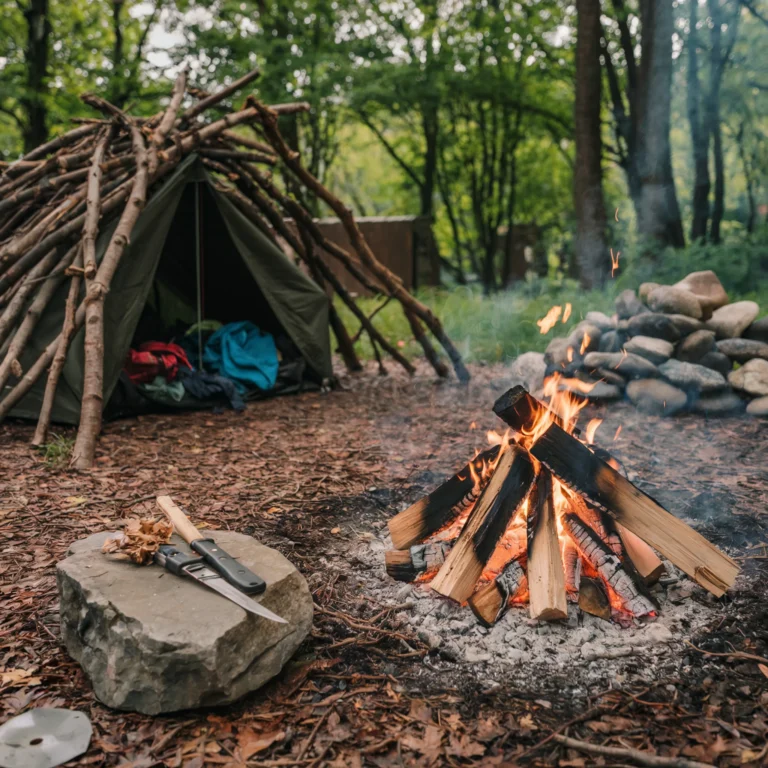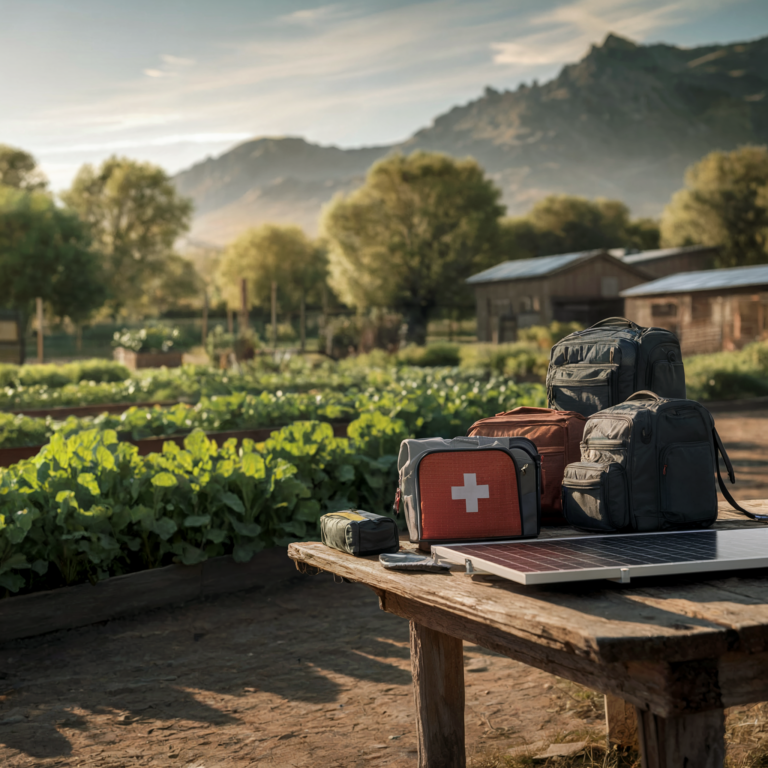We may earn a small commission when you purchase through our affiliate links. This helps fund Quiet Meadows Homesteading and our mission to promote self-reliance. We appreciate your support!
Prepping 101: The Ultimate Beginner’s Guide to Survival Skills and Essential Supplies

Welcome to “Prepping 101: The Ultimate Beginner’s Guide to Survival Skills and Essential Supplies”. In an unpredictable world, the ability to prepare and adapt can make all the difference. Here you’ll discover essential techniques that empower you to face any challenge head-on. Whether it’s a natural disaster, an unforeseen emergency, or just the daily unpredictability of life, equipping yourself with the right skills and supplies is not just wise—it’s essential. This guide is designed with beginners in mind, breaking down crucial survival skills into easy-to-understand steps. From mastering the basics of food storage to understanding first aid and building a comprehensive emergency kit, we’ll help you lay a solid foundation for your preparedness journey. Get ready to embrace the peace of mind that comes from knowing you’re equipped to thrive no matter what happens. Let’s dive in and unlock the world of prepping together!
Understanding the Basics of Prepping and Survival Skills
Prepping, short for “preparation,” is all about being ready for any situation that life might throw at you. It’s a proactive approach to ensuring that you and your loved ones can survive and thrive, regardless of the circumstances. The concept of prepping is not new; in fact, it has roots that go back to ancient times when our ancestors had to prepare for seasonal changes, food shortages, and other uncertainties. Today, prepping has evolved to include a wide range of activities and disciplines aimed at creating a state of readiness for emergencies.
At its core, prepping involves a combination of acquiring knowledge, survival skills, and supplies. The goal is to build resilience against potential disruptions, whether they stem from natural disasters like hurricanes and earthquakes, economic downturns, or even man-made crises. By understanding the basics of prepping, you can start to build a foundation that will support you in times of need. This means learning how to store food and water, understanding basic medical care, and being able to navigate your surroundings if you need to evacuate or survive without modern conveniences.
Getting started with prepping can feel overwhelming, but it doesn’t have to be. Think of it as a journey rather than a destination. Begin with small, manageable steps and gradually expand your knowledge and resources. Start by identifying the most likely risks in your area and tailor your preparations to address those specific threats. For example, if you live in an area prone to flooding, your focus might be on waterproof storage solutions and evacuation routes. The key is to start somewhere and build your preparedness over time.
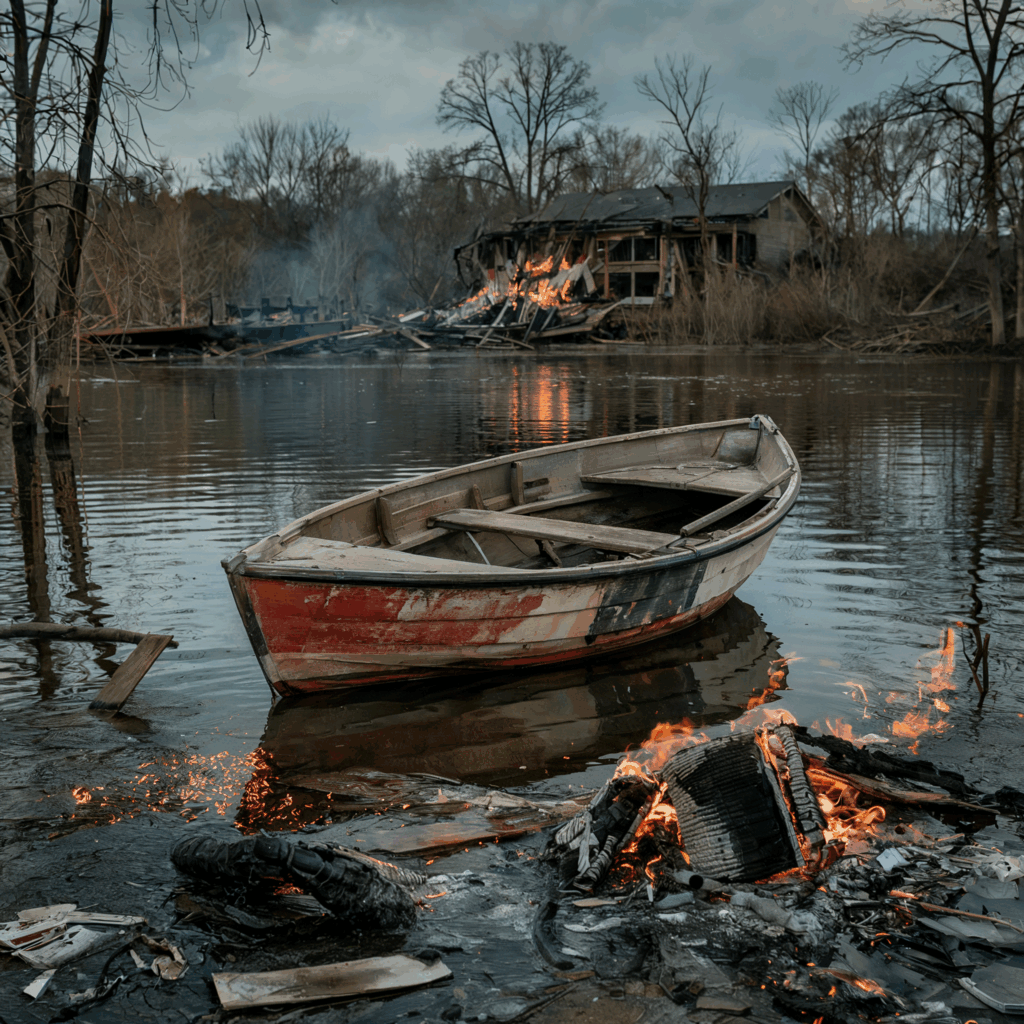
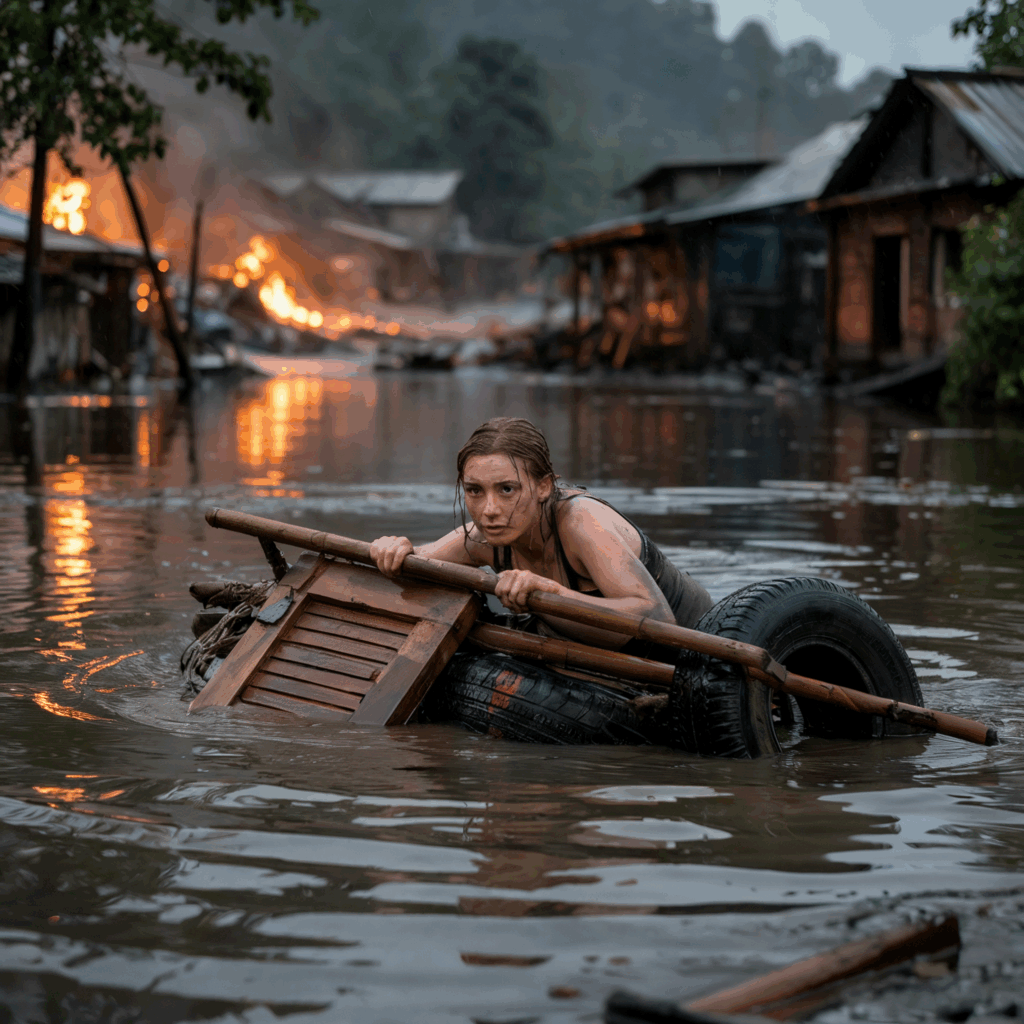
The Importance of Survival Skills
Survival skills are the backbone of any successful prepping strategy. Without the ability to adapt and respond to changing circumstances, all the supplies in the world won’t help you in an emergency. These skills encompass a wide range of abilities, from the very basic to the highly specialized. Preppers should Know the Basic Survival Skills to Secure their Safety. Learning survival skills not only boosts your confidence but also ensures that you have the practical knowledge to deal with real-world situations.
One of the most fundamental survival skills is the ability to create and maintain a source of fire. Fire provides warmth, allows you to cook food, and can be used to signal for help. Knowing how to start a fire with different methods—such as using a fire starter, matches, or even friction—can be invaluable. Additionally, understanding how to build a fire in various weather conditions and environments is crucial. Practice these skills regularly to ensure you can rely on them when needed.
Another essential survival skill is navigation. Whether you find yourself lost in the wilderness or in an urban environment where familiar landmarks are no longer recognizable, the ability to orient yourself and find your way can be life-saving. Learn how to read maps, use a compass, and recognize natural navigation aids. In today’s digital age, it’s also important to understand how to use GPS devices, but remember that these can fail, so traditional methods should always be part of your skill set.
Moreover, self-defense is a critical survival skill. Knowing how to protect yourself and your loved ones from potential threats is vital in any emergency situation. This can include learning martial arts, understanding how to use self-defense tools, and developing situational awareness to avoid dangerous encounters. Building these skills takes time and practice, but they are essential components of a well-rounded prepping strategy.
Essential Supplies Every Prepper Should Have
Having the right supplies is a cornerstone of effective prepping. While survival skills are vital, the tools and resources you have at your disposal can significantly impact your ability to survive and thrive in an emergency. When building your prepper supplies, focus on essential items that address your most basic needs: food, water, shelter, and safety.
First and foremost, create a well-stocked Bug Out Bag & Emergency Kit. This kit should include non-perishable food items that can last for an extended period. Canned goods, dried fruits, nuts, and freeze-dried meals are all excellent choices. Aim to have at least a two-week supply of food for each person in your household. Don’t forget to account for special dietary needs and preferences to ensure everyone has access to food they can eat and enjoy.
Water is another critical supply that should never be overlooked. The general rule of thumb is to store one gallon of water per person per day, enough for drinking, cooking, and basic hygiene. Consider investing in large water storage containers and smaller, portable water bottles for quick access. Additionally, water purification tablets or a reliable water filter can help ensure you have access to safe drinking water, even if your stored supplies run out.
Beyond food and water, your emergency kit should also include items that provide shelter and warmth. This can range from a sturdy tent and sleeping bags to extra blankets and warm clothing. A good-quality multi-tool, flashlight with extra batteries, and a first aid kit are also essential. Don’t forget personal hygiene items like soap, toothpaste, and toilet paper, as well as any necessary medications. By having these supplies on hand, you can better ensure your comfort and safety during a crisis.
Creating a Comprehensive Emergency Plan
An emergency plan is a critical component of any prepping strategy. It provides a structured approach to dealing with crises and ensures that everyone knows what to do when disaster strikes. A comprehensive emergency plan includes detailed procedures for various scenarios, communication strategies, and evacuation routes.
Begin by conducting a risk assessment to identify potential threats in your area. Consider natural disasters, such as earthquakes, floods, and hurricanes, as well as man-made events like power outages or chemical spills. For each type of emergency, outline the specific steps you need to take to ensure your safety. This may involve identifying safe areas in your home, learning how to shut off utilities, or knowing the best evacuation routes.
Communication is another crucial element of your emergency plan. Establish a clear method for staying in touch with family members, neighbors, and emergency services. This can include having a designated meeting place, using walkie-talkies or other communication devices, and creating a list of important phone numbers. Make sure everyone in your household understands the plan and can execute it even if you are not present.
Regularly practice your emergency plan to ensure it remains effective and up-to-date. Conduct drills for different scenarios and involve all family members. This not only helps to identify any gaps in your plan but also ensures everyone is familiar with their roles and responsibilities. By having a well-thought-out and practiced emergency plan, you can significantly improve your chances of staying safe during a crisis.
Food Storage and Preservation Techniques
Food storage is a fundamental aspect of prepping, ensuring that you have enough to eat during an emergency when regular food supplies may be disrupted. Proper food storage involves choosing the right foods, understanding how to store them, and knowing techniques to extend their shelf life. By doing so, you can maintain a reliable food supply that can last for months or even years.
Start by selecting non-perishable foods that have a long shelf life and require minimal preparation. Canned goods, dried beans, rice, pasta, and freeze-dried meals are excellent choices. Store these items in a cool, dry place to maximize their longevity. Pay attention to expiration dates and rotate your stock regularly to ensure that you are using the oldest items first and replacing them with fresh supplies.
In addition to storing food, learning preservation techniques can help you make the most of your resources. Canning is a popular method for preserving fruits, vegetables, and meats. By sealing food in jars and heating them to kill bacteria, you can create a store of nutritious, homemade meals that can last for years. Dehydrating is another effective method, which involves removing moisture from food to prevent spoilage. You can use a dehydrator or an oven to dry fruits, vegetables, and even meat.
Another valuable preservation technique is vacuum sealing. By removing air from storage bags or containers, you can prevent oxidation and extend the shelf life of your food. Vacuum sealing is particularly useful for items like grains, nuts, and dried fruits. Incorporating these techniques into your food storage strategy ensures that you have a diverse and reliable supply of food to draw from in an emergency.
Water Purification Methods and Storage Solutions
Water is the most essential resource for survival, making water purification and storage critical components of any prepping strategy. Ensuring you have access to clean drinking water during an emergency can mean the difference between life and death. Fortunately, there are several methods and solutions available to help you secure a safe water supply.
Start by storing an adequate amount of water for your needs. The general recommendation is one gallon of water per person per day, with a minimum supply for at least two weeks. Use food-grade water storage containers made of BPA-free plastic or stainless steel to avoid contamination. Store these containers in a cool, dark place to prevent algae growth and degradation.
In addition to stored water, having the means to purify water from other sources is crucial. Boiling water is one of the most effective methods to kill bacteria, viruses, and parasites. Bring water to a boil for at least one to three minutes to ensure it is safe to drink. However, boiling may not remove chemical contaminants, so it’s important to use additional purification methods if necessary.
Water filters and purification tablets are invaluable tools for preppers. Portable water filters, such as those made by brands like Sawyer and LifeStraw, can remove pathogens and particulates from water, making it safe to drink. Purification tablets containing chlorine dioxide or iodine can also effectively kill microorganisms. Always follow the manufacturer’s instructions for use to ensure proper treatment. By combining storage solutions with reliable purification methods, you can ensure a consistent supply of safe drinking water.
First Aid Skills and Medical Supplies
In an emergency, access to professional medical care may be limited or unavailable, making first aid skills and medical supplies crucial for survival. Knowing how to treat common injuries and illnesses can prevent minor issues from becoming serious problems. A well-stocked first aid kit, combined with basic medical knowledge, can greatly enhance your ability to care for yourself and others.
Begin by assembling a comprehensive first aid kit that includes essential supplies. Basic items to include are adhesive bandages, gauze pads, antiseptic wipes, adhesive tape, scissors, tweezers, and a digital thermometer. Add over-the-counter medications such as pain relievers, antihistamines, and anti-diarrheal tablets. Don’t forget to include any prescription medications that you or your family members may need, along with a copy of the prescriptions.
In addition to having the right supplies, learning basic first aid skills is essential. Take a certified first aid and CPR course to build your knowledge and confidence. Skills to focus on include treating cuts, managing burns, performing CPR, and recognizing the signs of shock or heatstroke. Knowing how to properly clean and dress wounds, stabilize broken bones, and handle allergic reactions can make a significant difference in an emergency.
For more advanced medical situations, consider learning how to use a tourniquet, administer epinephrine, and recognize the symptoms of serious conditions like heart attacks or strokes. Building these skills takes time and practice, so seek out training opportunities and resources to expand your knowledge. By combining first aid skills with a well-stocked medical kit, you can be better prepared to handle health emergencies when professional care is not immediately available.
Navigating the Outdoors: Basic Survival Skills
Surviving in the outdoors requires a unique set of skills that can be invaluable in an emergency. Whether you find yourself lost in the wilderness or need to evacuate to a remote location, knowing how to navigate, find food and water, and create shelter can ensure your safety and well-being. These skills, often referred to as bushcraft or wilderness survival, are essential for any prepper.
One of the most important outdoor survival skills is the ability to find and purify water. Streams, rivers, and lakes are common sources, but you can also collect rainwater or dew. Use water purification methods, such as boiling, filtering, or chemical treatment, to ensure the water is safe to drink. Learning how to identify natural indicators of water, such as animal tracks or green vegetation, can help you locate sources when you are in unfamiliar territory.

Building a shelter is another critical skill for outdoor survival. A good shelter protects you from the elements and helps regulate your body temperature. Learn how to construct different types of shelters, such as lean-tos, debris huts, and A-frame shelters, using natural materials like branches, leaves, and bark. Practice building these shelters in various environments to gain confidence in your abilities.
Foraging for food is also an essential outdoor survival skill. Familiarize yourself with edible plants, berries, and nuts in your region, and learn how to identify them safely. Hunting and fishing can provide additional food sources, so consider learning basic trapping, fishing, and small-game hunting techniques. Always be mindful of local regulations and ethical practices when foraging or hunting. By mastering these basic survival skills, you can increase your chances of thriving in the outdoors during an emergency.
Building a Community: Networking with Other Preppers
Prepping is often seen as a solitary activity, but building a community of like-minded individuals can significantly enhance your preparedness efforts. Networking with other preppers allows you to share knowledge, resources, and support, creating a stronger collective resilience. By working together, you can tackle challenges more effectively and increase your chances of survival in an emergency.
Start by reaching out to local prepper groups or online communities. Social media platforms, forums, and meetup groups can connect you with others who share your interests and goals. Participate in discussions, attend events, and contribute your knowledge and experiences. Building relationships within these communities can provide valuable insights and support as you develop your prepping strategy.
Collaborating with other preppers can also help you pool resources and survival skills. For example, one member might have expertise in first aid, while another excels in food preservation. By sharing your strengths and learning from others, you can create a more comprehensive preparedness plan. Consider organizing group activities, such as training sessions, emergency drills, or resource-sharing initiatives, to strengthen your collective capabilities.
In addition to practical benefits, building a community of preppers can provide emotional support and a sense of belonging. Facing the uncertainties of the world can be daunting, but knowing that you have a network of people who understand and share your concerns can be reassuring. By fostering these connections, you can create a supportive environment that enhances your overall resilience and well-being.
Conclusion: Embracing the Prepper Mindset
Embracing the prepper mindset is about more than just acquiring skills and supplies; it’s about adopting a proactive, resilient approach to life. Prepping empowers you to take control of your circumstances, no matter how uncertain they may be. By understanding the basics of prepping, honing your survival skills, and building a comprehensive emergency plan, you can face challenges with confidence and peace of mind.
The journey of prepping is ongoing and ever-evolving. As you gain experience and knowledge, continue to refine your strategies and expand your preparedness efforts. Stay informed about potential threats and seek out new resources and training opportunities. Remember that prepping is not a one-size-fits-all approach; tailor your preparations to your unique needs, environment, and circumstances.
Ultimately, the prepper mindset is about fostering a sense of self-reliance and adaptability. It’s about being prepared for the unexpected and knowing that you have the tools and skills to thrive, no matter what happens. By embracing this mindset, you can create a safer, more secure future for yourself and your loved ones. So, start your prepping journey today, and take the first steps towards a more resilient and prepared life!
Related Resources: Ready.gov is maintained by the Department of Homeland Security and provides resources, checklists, and guides for various emergency situations, including tips on survival skills, creating emergency kits, and planning for disasters. It’s a comprehensive resource for anyone looking to improve their preparedness for unexpected events.

